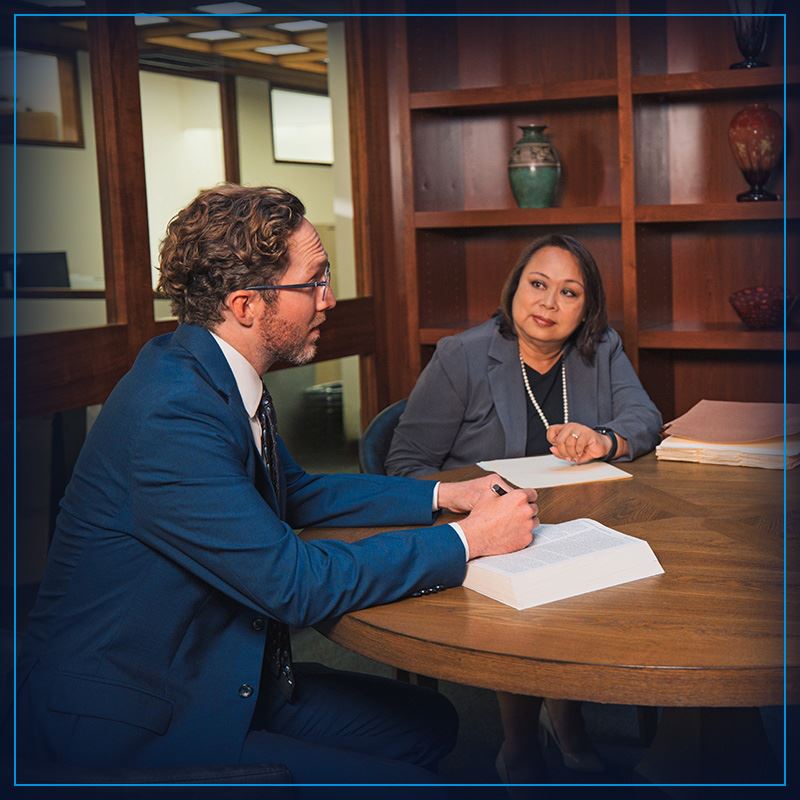
HAWAII SHOULDER DYSTOCIA LAWYERS
WHAT IS SHOULDER DYSTOCIA?
Shoulder dystocia is a type of childbirth complication that occurs when the infant’s shoulder becomes lodged behind the mother’s pubic bone. It may occur in deliveries where the infant is large in relation to the mother’s pelvic bone and birth canal, or in a “sunny-side up” delivery where the infant is face up instead of face down. No matter the cause, shoulder dystocia should be immediately addressed to help the infant avoid oxygen deprivation.
If shoulder dystocia is mismanaged, meaning it is improperly handled or is not handled in time, a baby may suffer from brachial plexus injuries or brain damage. A Hawaii shoulder dystocia attorney at Davis Levin Livingston can offer skilled and compassionate guidance if shoulder dystocia occurred during delivery and your child was injured. They know how shoulder dystocia should be addressed and can identify instances of improper medical care.
For a free review of your claim, call (808) 740-0633. Our attorneys and medical director can accurately assess the situation and offer knowledgeable insight.
Risk Factors & Symptoms of Shoulder Dystocia
This condition occurs during vaginal births. In short, the infant’s shoulder remains inside the mother’s body after the head has exited.
According to the March of Dimes, there are several reasons why this condition may occur, including:
- Weight factors – If a mother is obese or is delivering a very large infant, there may be a higher risk of shoulder dystocia.
- Medication factors – In some cases, mothers who receive an epidural to relieve pain during delivery may have a higher risk of having a birth involving this condition.
- Assisted births – In some cases, babies born with the assistance of forceps or vacuum devices may have a higher incidence of shoulder dystocia.
Keep in mind that these are generalizations and in some cases, there may be no risk factors that indicate this could be a problem.
It is important to be aware that this condition can cause problems for both the mother and infant while in the delivery room. These complications can be very serious and may require additional follow-up care and long-term medical attention.
Some symptoms of shoulder dystocia include:
- For mothers – Mothers who have an infant born under these conditions may suffer from bruising of the bladder, rectum, vagina, or cervix or may experience some hemorrhaging.
- For infants – Infants can suffer a number of problems, including lack of oxygen, paralysis, and long-term numbness in the shoulder or arm.
Physicians who have determined the infant may be at risk for shoulder dystocia may elect to perform a C-section to avoid this condition, or if they determine that vaginal delivery is possible, they may attempt specific maneuvers in the delivery room to avoid putting the infant or mother at risk.
Shoulder Dystocia Injuries
Effectively maneuvering an infant with shoulder dystocia can be difficult, and there are different methods that a doctor may attempt to address the problem. If a doctor uses the wrong method, is too forceful in attempting to deliver the baby, or otherwise fails to provide standard care, serious injuries may result. A doctor may also be held accountable for failing to recommend a C-section in a delivery at a high risk for shoulder dystocia or other complications.
The following injuries may be caused by mismanaged shoulder dystocia:
- Brachial plexus injuries
- Erb’s palsy
- Klumpke’s palsy
- Birth asphyxia
- Hypoxic ischemic encephalopathy (HIE)
- Cerebral palsy
- Maternal tearing and bleeding
Shoulder Dystocia Treatment
If you have had a baby and there was an instance of shoulder dystocia, it may be a result of medical malpractice.
To determine this, you should consider some of the questions that an injury attorney may ask to evaluate your case, including:
- Did you have any of the possible risk factors for shoulder dystocia?
- Was your doctor aware of these risk factors and was he or she monitoring your condition?
- Were you properly monitored during labor and delivery?
- Did the doctor diagnose the problem fast enough?
- Did the doctor use excessive force delivering the baby?
- Do you believe an emergency C-section should have been performed?
While there is often no warning, women who have certain risk factors must be monitored carefully, both during pregnancy and during the birthing process, to avoid the damage that can be caused to both mother and infant.
Serving Hawaii for Over Four Decades
For over 40 years, the Hawaii birth injury lawyers at Davis Levin Livingston have been helping families in Honolulu and across the Hawaiian Islands recoup their losses after experiencing harm caused by obstetrical malpractice. Davis Levin Livingston knows this is an extremely difficult situation to bear, and they want to alleviate the stress you are experiencing by bringing at-fault parties to justice and recovering a fair settlement or award to provide for your child’s care.
If you have had a child and shoulder dystocia caused you additional injuries or resulted in your infant showing any symptoms of paralysis or weakness in the arms, you may have been treated incorrectly during the birthing process. A medical malpractice attorney who understands the risks associated with this condition may help you get compensation for the additional costs as well as pain and suffering for both mother and infant.
Contact our Hawaii shoulder dystocia attorneys today for a free consultation regarding your legal options. Call (808) 740-0633 or reach out to us using our online request form.


Four Decades of Record Breaking Victories
-
$15,000,000 Vacuum/Forceps Injury
The hospital improperly attempted to deliver a post-date baby using a traumatic second-stage vacuum extraction. This extraction and the delay in delivery resulted in permanent brain damage to the baby.
-
$9,975,000 Brain Injury
The hospital's failure to monitor an infant's rising bilirubin levels led to bilirubin encephalopathy and kernicterus, resulting in severe and permanent brain damage. A settlement of $9,975,000 was obtained.

Why Davis Levin Livingston?
-
Available by phone 24/7 & ready to help.
-
Secured tens of millions of dollars on behalf of our clients.
-
Highest malpractice judgment in U.S. history against a military hospital.
-
Includes an experienced medical team including a nursing staff to answer your questions.
-
Mark Davis and Mike Livingston have been recognized as some of the best lawyers in Hawaii.
-
Resources available to advance your expenses; no cost or fees unless Davis Levin Livingston wins your case.

Dedicated Legal Counsel You Can Count On
Helping Families throughout hawaii for over 40 years
-
"Professional, KIND, and understanding"
They are most professional, KIND, and understanding. Thank you Matt Winter for all your help.- Clare T. -
"We wouldn't have chosen any other team!"
Mathew Winter and the whole staff of Davis Levin Livingston guided us every step of the way and made sure we understood everything that was going on. They were always so welcoming and compassionate. Communication was never a problem and emails were answered super fast, especially when we had so many questions. They- Maariel -
"The absolute best firm in Hawaii. Compassion and professionalism at its best!"
Truly a wonderful experience with everyone at the firm. I can't thank you enough for helping provide closure for my family and me during this process. The absolute best firm in Hawaii. Compassion and professionalism at its best!- Daniel -
"After doing extensive research I knew that Davis Levin Livingston was the firm for me due to the success they have had in cases like mine."
After doing extensive research I knew that Davis Levin Livingston was the firm for me due to the success they have had in cases like mine. What surprised me was their personal touch. In the 3- Anthony

Did you know?
you are not alone in this.
-
7 OUT OF 1,000 NEWBORNS ARE DIAGNOSED WITH A BIRTH INJURY.
-
IN A YEAR, 157,000 MOTHERS AND CHILDREN SUFFERED POTENTIALLY PREVENTABLE INJURIES.
-
THE LIFETIME COSTS OF BIRTH INJURIES CAN REACH TENS OF MILLIONS OF DOLLARS.
-
ON AVERAGE 28,000 BABIES ARE BORN WITH A BIRTH INJURY EVERY YEAR.







.1).1).2401101010550.png)





.1910211111556.png)

.1).1910211114162.png)
.1910211111550.png)